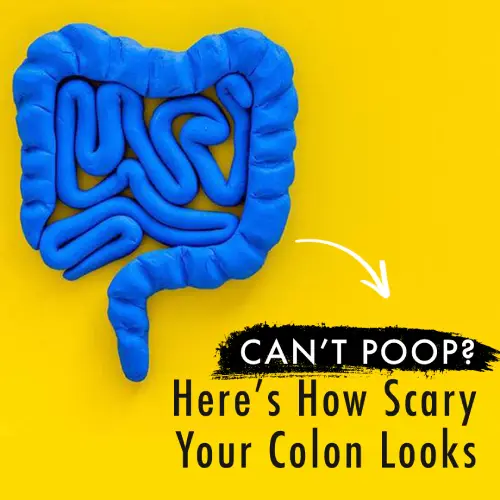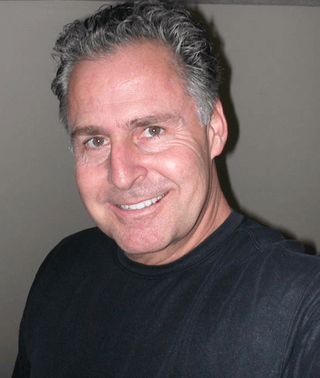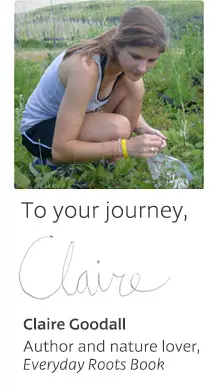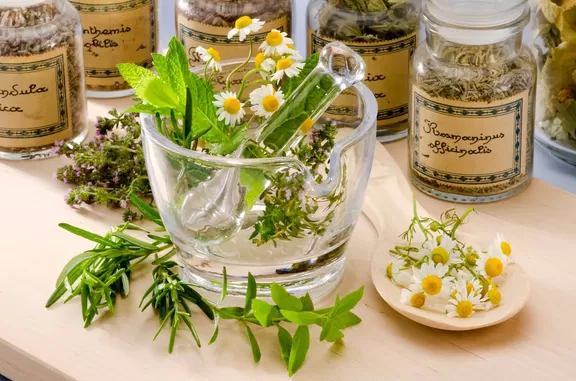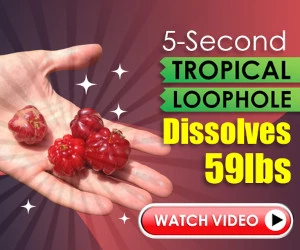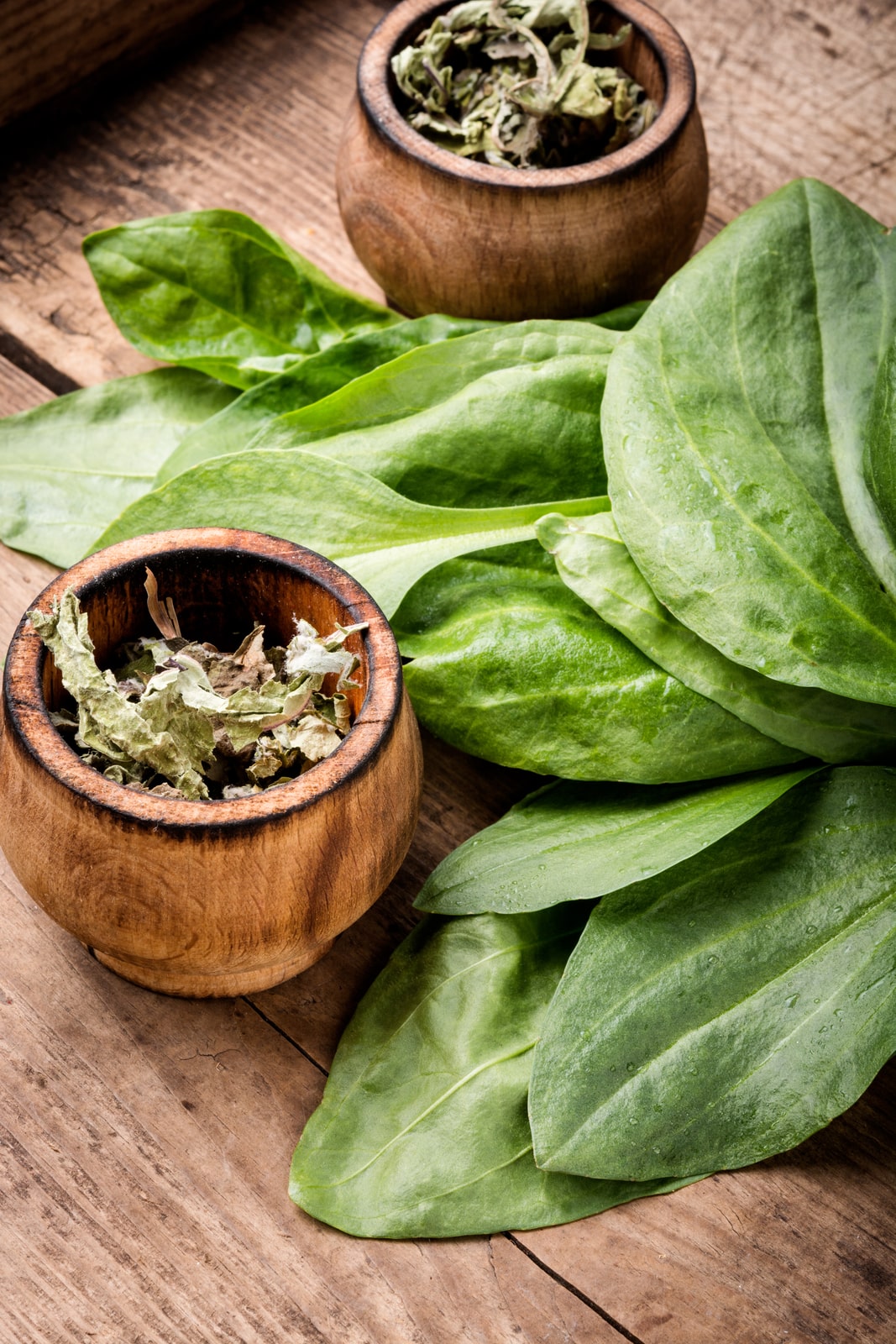
Plantain (Plantago, various species) can be used as a natural hemorrhoid treatment. Possibly the primary reason why plantain will be effective is due to the presence of allantoin. Allantoin is a natural chemical found in nature that is used in many cosmetic products. It helps exfoliate and heal the skin. For this reason, allantoin containing plants (such as comfrey) are candidates for use with hemorrhoids.
Another reason why plantain is good for hemorrhoids is due to the natural astringent action of the tannins that are in this herb. As a result, tannins can help to stop bleeding. Tannins also help with wound healing, as research we will cover demonstrates.
If you have hemorrhoids, you may have been struggling with excess inflammation in the rectum. And, yes, plantain is also a proven anti-inflammatory. By reducing inflammation, plantain might help wounds progress out of the inflammatory phase into the proliferative phase of wound healing.
The late Dr. James A. Duke, in his exceptional book The Green Pharmacy,(source 15) lists plantain as the second option for herbal hemorrhoid treatment. The first option cited by duke is comfrey (Symphytum). And Herbsey.com has an entire article about comfrey and hemorrhoids.
Dr. Duke states in the aforementioned book that plantain has a strong folk reputation as a hemorrhoid healer. Dr. Duke goes on to say "If I were caught in the bush with a hemorrhoid and without my Tucks, I’d create a poultice and apply it to the afflicted area."
How to Use Plantain for Hemorrhoids
You can take the leaves of the plantain plant, crush them up, and use them to make a poultice. A poultice is simply a mass of material that is placed on cloth and spread over a body area. It would be a good idea to use this at night, and simply wash off the plantain when you shower in the morning.
Something to consider is using allantoin powder, or a cream containing this chemical, with the plantain. A cream should help the poultice stay affixed to the area; and the allantoin might help to speed up healing action.
Naturally Treat Hemorrhoids in 48 Hours
Jessica Wright’s unique 5-step, all-natural approach to hemorrhoid treatment delivers permanent relief. Heal hemorrhoids in 48 hours, and eliminate the root cause in 30 to 60 days.
Benefit from Jessica’s 12 years of research; her book is backed by a 60 day, 100% money back guarantee.

Plantain Contains Healing Allantoin
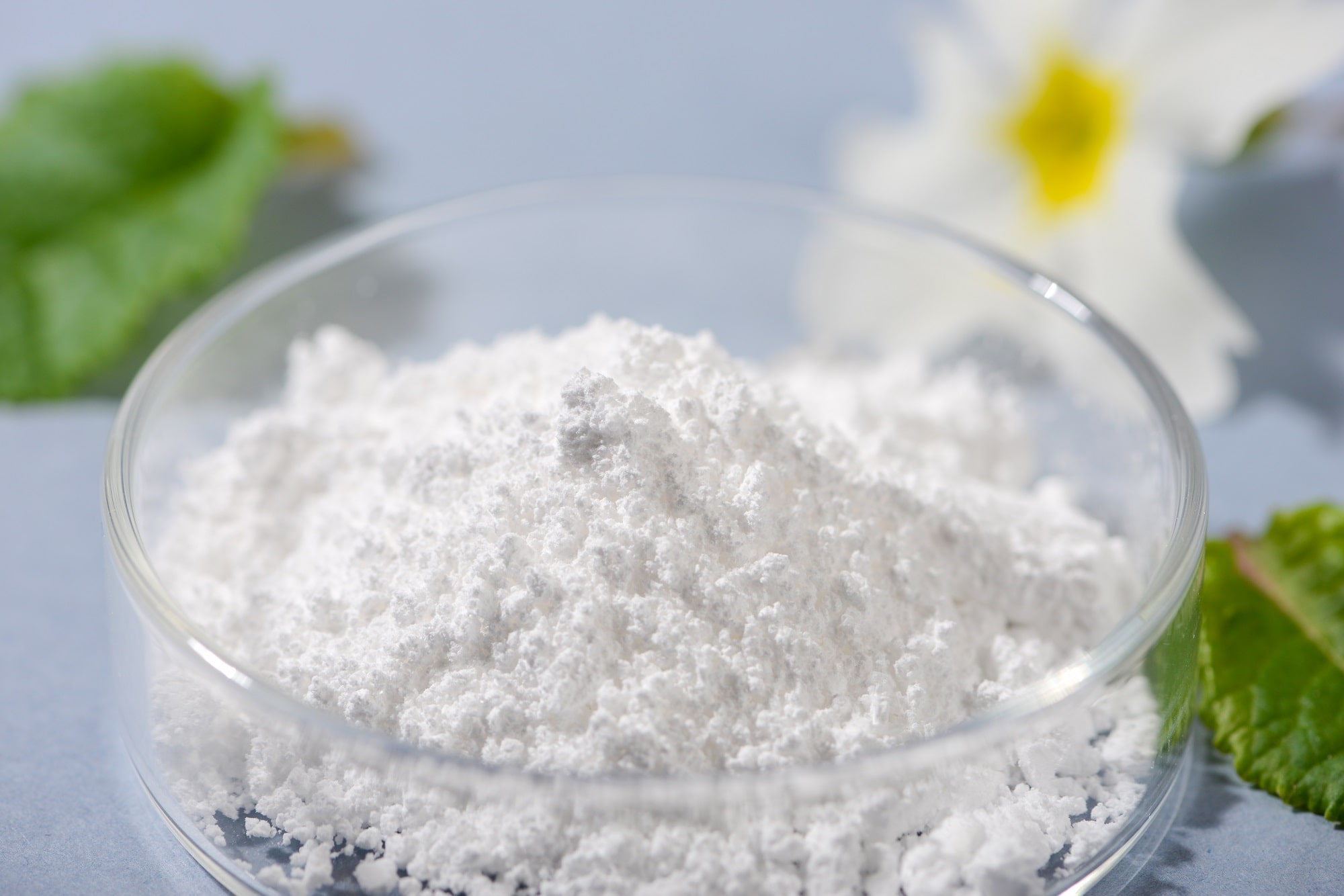
According to Dr. James Duke’s phytochemical database (hosted by the U.S. Department of Agriculture) common plantain (Plantago major) contains allantoin.(source 1)
Allantoin is a pharmacologically active chemical compound; it is used in topical medications and by the cosmetic industry. Allantoin is used because it helps skin cells regenerate and can be used to calm the skin.(source 2)
The outermost layer of the skin, known as the stratum corneum, is packed with dead or dying skin cells known as corneocytes.(source 3) Allantoin can remove corneocytes by loosening the desmosomes that cause the corneocytes to adhere to each other. Consequently, it exfoliates, smooths, and softens the skin; making it appear more healthy.(source 2)
Allantoin’s antioxidant, anti-inflammatory, antiseptic effects, and keratolytic (breaks down the outer layers of the skin) properties allow it to help wounds to heal. This chemical has demonstrated the ability to help with growth of healthy tissue by promoting cell proliferation and extracellular matrix synthesis. Allantoin may also help with forming granulation tissue (new tissue and microscopic blood vessels that form on a wound during the healing process) and epithelialization (epithelial cells migrating upwards and repairing a wounded area).(source 4)
Samuel Bart’s Digestive Health Solution
Samuel Bart has always been passionate about plants and their ability to keep us healthy. He has put together some of the best natural ways that could help anyone support a healthy digestive system.
Samuel perfected an easy, yet powerful formula, which consists of amazing ingredients. Bart’s supplement is backed by a ironclad 60-day, money back guarantee.

Astringent Tannins in Plantain

A 2011 study published in the International Journal of Biodiversity and Conservation(source 5) evaluated the tannin and polyphenol content of plantain (Plantago major L.).
The study found that plantain leaves had more phenols, flavonoids, and tannins than the seeds of the plant. The following figures show these chemical levels, and are expressed in mg/g on a dry weight basis.
Total Phenolic Content (mg gallic acid / g):
- P. major L. Leaves: 13.05
- P. major L. seeds: 7.43
Total Flavonoid Content (mg Quercetin / g):
- P. major L. Leaves: 6.41
- P. major L. seeds: 3.03
Total Tannin Content (mg Catechin / g):
- P. major L. Leaves: 5.63
- P. major L. seeds: 2.43
Other benefits from plantain extract were also determined. The study found the best antioxidant activity came from the ethanolic (ethanol is drinking alcohol) extract of P. major leaves. Additionally, the ethanolic P. major extract demonstrated anti-cancer ability; it killed 74% of tumor cells.
Another study, published in the Journal of Pharmaceutical and Biomedical Analysis in 2005,(source 6) evaluated the tannin content of plantain. The study found the tannin content in the leaves, stems, and flowers of 6 different Plantago species. The following data is the specific percentage range of tannins in the different species; as the tannin levels varied between species.
Tannin Content in Plantago species:
- Leaves: 0.56% to 2.26%
- Stems: 0.28% to 1.00%
- Flowers: 0.44% to 2.21%
- Stems: 0.28% to 1.00%
Tannins Help Wound Healing
A 2011 study, published in BMC Complementary and Alternative Medicine,(source 7) investigated who tannins would affect wound healing.
The study used rats and created wounds on the rats. The wounds were treated with vaseline ointment, an ointment composed of 81% tannins, or erythromycin ointment. The wounds were then investigated 3, 7, and 10 days later.
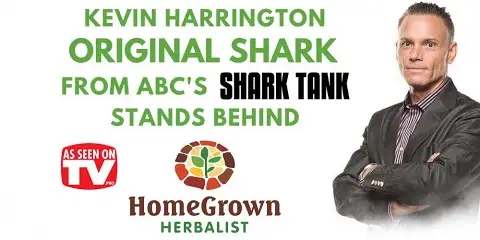
Comprehensive Herbalist School
Dr. Patrick Jones, founder of the HomeGrown Herbalist School of Botanical Medicine has been a practicing veterinarian for over 25 years. He is also a clinical herbalist and traditional naturopath.
Kevin Harrington, Original Shark from ABC’s Shark Tank, stands behind Dr. Patrick Jones and HomeGrown Herbalist.
Learn More
Comprehensive Herbalist School
Dr. Patrick Jones, founder of the HomeGrown Herbalist School of Botanical Medicine has been a practicing veterinarian for over 25 years. He is also a clinical herbalist and traditional naturopath.
Kevin Harrington, Original Shark from ABC’s Shark Tank, stands behind Dr. Patrick Jones and HomeGrown Herbalist.Learn More
The study found that on days 7 and 10 wounds of rats treated with tannin ointment had contracted more than those given just vaseline. And, on all the investigation days rats given tannin ointment had better granulation formation and collagen organization than rats given vaseline.
Granulation formation occurs when new connective tissue and microscopic blood vessels form on the surface of a wound. Granulation tissue formation is a normal part of the healing process.
Additionally, the tannin extract used for making the tannin ointment were able to inhibit (stop the growth of) Staphylococcus aureus and Klebsiella Pneumonia in vitro.
The study concluded that the tannin extract it used (made from the fruit of Terminalia chebula Fructus Retz) can help with skin wound healing in rats. This healing ability is probably due to the potent antibacterial and new blood vessel forming ability of the tannins.
Additional Benefits of Tannins
In a 1989 study, published in the American Journal of Respiratory and Critical Care Medicine,(source 9) tannins were found to contract rabbit blood vessels. Tannin at doses of 2 to 50 micrograms / ml caused concentration dependent contractions of resting blood vessels.
According to a 2012 study in the Journal of Pharmacognosy and Phytochemistry(source 8) tannins are astringent. The study also states some medicinal applications of tannins.
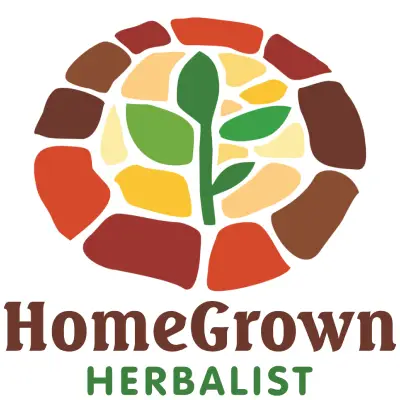
HomeGrown Herbalist Herb Shoppe
Owner of HomeGrown Herbalist Dr. Patrick Jones is a practicing veterinarian, Clinical Herbalist, and traditional naturopath. He owns and operates Fairview Animal Hospital in Buhl, ID.
Their herb shoppe provides herbs, essential oils, and tools. If you have some time, check it out!
Learn More
HomeGrown Herbalist Herb Shoppe
Owner of HomeGrown Herbalist Dr. Patrick Jones is a practicing veterinarian, Clinical Herbalist, and traditional naturopath. He owns and operates Fairview Animal Hospital in Buhl, ID.
Their herb shoppe provides herbs, essential oils, and tools. If you have some time, check it out!Learn More
Tannins can bind to, precipitate (protein precipitation is the process in which the protein is removed from any contaminants it might be mixed with), or shrink proteins. This astringency of tannins causes your mouth to pucker after you have a tannin containing beverage like strong tea, wine, or unripe fruit.
This same study states that tannins can be used to stop bleeding, and can help with hemorrhoids. Additionally, tannins can also prevent infection while they heal wounds. Tannins can form a protective layer over exposed tissue, helping to prevent further infection.
Dr. John Herzog (MD)
Dr. John Herzog, a "survival surgeon" from Maine explains what home remedies work best in a crisis situation.
This may be important in the event you require first-aid or are in an emergency situation without easy access to a hospital. Dr. John Herzog has assembled a large collection of home remedies for such scenarios.

Plantain is Anti-Inflammatory
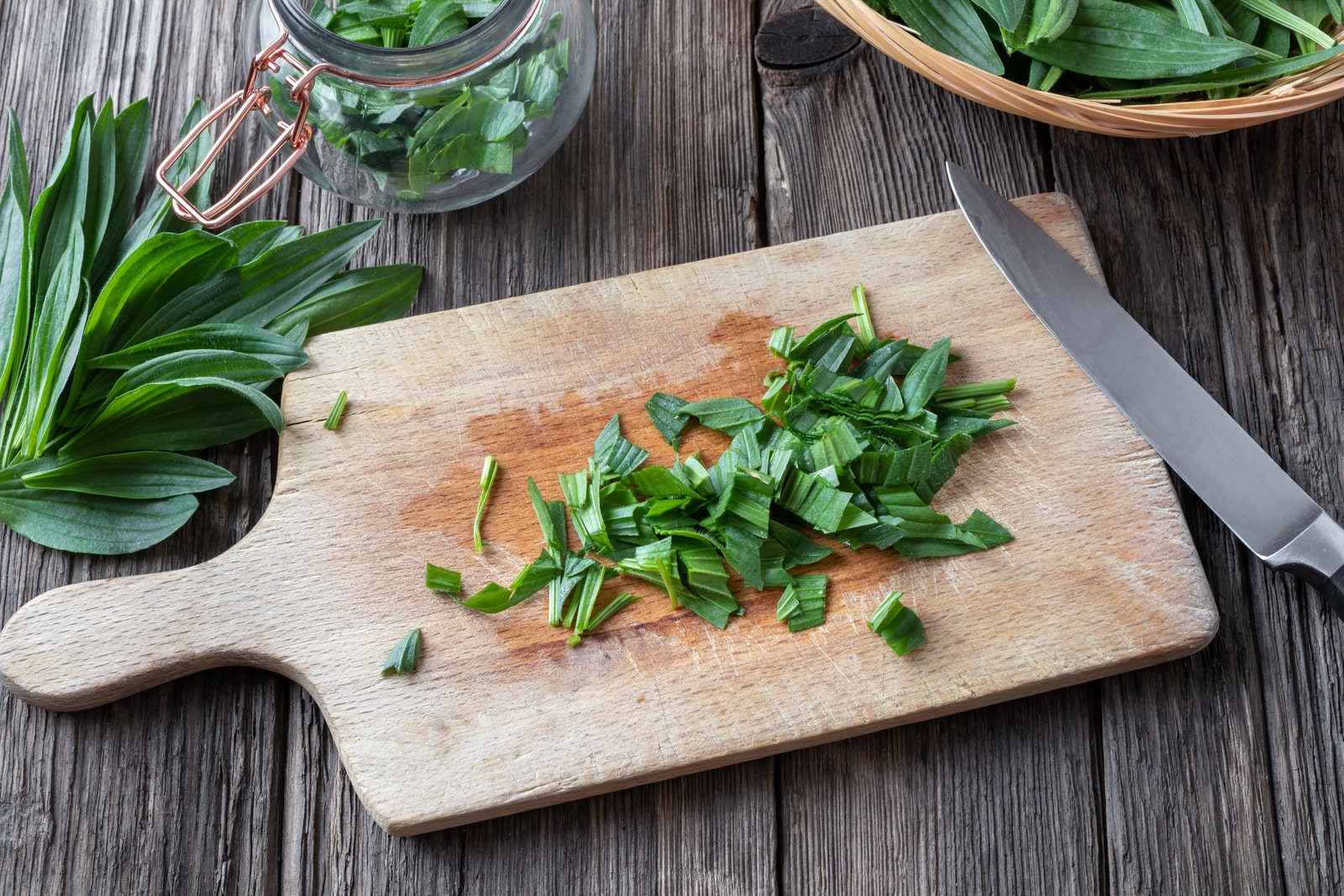
A 2009 study published in the Indian Journal of Pharmacology(source 10) demonstrated the anti-inflammatory ability of plantain. One of the study’s objectives was to evaluate the anti-inflammatory ability of a methanol extract of Plantago major L. seeds on rat paw inflammation (induced oedema; i.e., fluid retention).
The rats were given injections of the plantain extract at doses of 5 mg/kg, 10 mg/kg, 20 mg/kg, and 25 mg/kg. Rats given 20 mg/kg had inflammation reduced by 45.87%. Rats given the 25 mg/kg dose had inflammation reduced by 49.76%.
The study’s authors speculated that the anti-inflammatory effect of the plantain extract might be due to a cyclooxygenase-2 (COX-2) inhibitory effect. Let’s explain this briefly.
Cyclooxygenase-2 and Inflammation
Relevant to inflammation, COX-2 is an enzyme that is expressed in response to inflammatory stimuli. It catalyzes the formation of prostaglandins (lipid compounds in the body having hormone-like effects) that mediate pain and support the inflammatory process.(source 11)(source 12)
The biosynthesis of prostaglandins is blocked by nonsteroidal anti-inflammatory drugs (NSAIDs). Despite the blocking by NSAIDs, prostaglandins might be able to promote and resolve inflammation. Prostaglandins have a key role in creating an inflammatory response.(source 12)
More on Reducing Inflammation
A 2020 study in the Journal of Ethnopharmacology(source 13) found that plantain can help reduce inflammation. This study states the wide range of medicinal applications of plantain is mainly related to the inflammation processes.
The study analyzed the following Plantago species: P. major L., P. lanceolata L., P. altissima L., P. argentea Chaix, P. holosteum Scop. and P. media L. The study looked at how methanol extracts of these plantain species affected the inflammatory mediators prostaglandin E2 (PGE2) and thromboxane A2 (TXA2).

Comprehensive Herbalist School
Dr. Patrick Jones, founder of the HomeGrown Herbalist School of Botanical Medicine has been a practicing veterinarian for over 25 years. He is also a clinical herbalist and traditional naturopath.
Kevin Harrington, Original Shark from ABC’s Shark Tank, stands behind Dr. Patrick Jones and HomeGrown Herbalist.
Learn More
Comprehensive Herbalist School
Dr. Patrick Jones, founder of the HomeGrown Herbalist School of Botanical Medicine has been a practicing veterinarian for over 25 years. He is also a clinical herbalist and traditional naturopath.
Kevin Harrington, Original Shark from ABC’s Shark Tank, stands behind Dr. Patrick Jones and HomeGrown Herbalist.Learn More
TXA2 is an eicosanoid, which is a specific kind of lipid. It is generated by an enzymatic reaction with arachidonic acid. There are three enzymes that create eicosanoids: COX-1 / COX-2, phospholipase A2, and TxA2 Synthase. TXA2 causes the activation of platelets and platelet aggregation; and, for this reason, is known as prothrombotic (stimulates the coagulation or clotting of the blood).(source 14)
TXA2 is also a blood vessel constrictor and gets activated in the event of tissue injury or inflammation.(source 14)
The 2020 Journal of Ethnopharmacology study found that plantain extracts were able to inhibit (stop the activity of) PGE2 and TXA2 production comparably to as much as aspirin did at low dose concentrations. The study concluded that "P. altissima can be regarded as [a] promising anti-inflammatory agent."
The less frequently investigated P. altissima was highlighted as it had the strongest effect on both PGE2 production and related gene expression. Yet, in most cases a positive correlation was demonstrated between the content of apigenin and ursolic acid and a plantain extract’s ability to suppress PGE2 and TXA2 production and related gene expression.
Claire Goodall’s Amazing Guide
Clair Goodall is a bee-obsessed, natural medicine convert from Minnesota (USA). And, she does keep bees!
Clair has created 350+ page book documenting how to replace the toxic products and medications in your home with healthier, all-natural alternatives.

Heal Hemorrhoids Naturally in 48 Hours
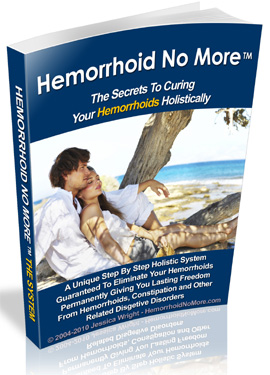
If you have tried "everything" to treat hemorrhoids, including surgery, but it didn’t work—your’re not alone. Jessica Wright experienced this same hardship due to hemorrhoids. But, with extensive research and understanding of natural medicine, she developed a solution to permanently end her hemorrhoids.
Jessica Wright wrote an entire book detailing exactly how to replicate her success. Also, it appears "Jessica Wright" is probably a pen name for a woman—and author—named Linda Allen. Linda suffered from recurrent yeast infections as well, maybe at the same time as she had hemorrhoids. She turned to natural medicine for answers when medical doctors and their solutions could not help.
Jessica’s story is one of severe and chronic hemorrhoids. It involves routine doctor’s visits, prescription medications / creams, significant suffering from hemorrhoids, and even a two hour hemorrhoids surgery (stapled hemorrhoidopexy). Yet, 12 years of these treatments didn’t resolve Jessica’s hemorrhoids.
Despite these setbacks, Jessica didn’t give up; instead, she turned to natural medicine and diligent research. Skipping to the end of Jessica’s story, she would develop a natural method to treat hemorrhoids that worked brilliantly.
After Jessica put together her treatment protocol and used it, she found her hemorrhoids completely disappeared. And, they stayed gone. Something her doctor was not able to do. Yet, all it took was the right natural therapeutic approach.
Jessica also gave her treatment approach to others; and, they experienced the same exceptional results. Typically, Jessica’s system provides dramatic relief of hemorrhoids in just 48 hours. And, the root cause of hemorrhoids is fixed within 30 to 60 days.
A company selling hemorrhoid symptom products does not want their customer base diminished. Consequently, unpatentable natural medicine does not get much attention or publicity.
So, how can you know if Jessica Wright’s claims are legitimate and not a scam? That is a great question. Here are 3 important reasons why Jessica’s book is legitimate:
- It is published by a large U.S. based company (Located in Idaho) known as ClickBank. ClickBank handles all the sales and refunds of many products like Jessica’s. They do business in many countries; and, have been in business for many years.
- ClickBank provides a 60 day, 100% money back guarantee on all their products, Jessica’s book included.
- If you are not satisfied with Jessica’s book you can simply contact ClickBank (they make it very easy) for a full refund.
Jessica’s story is more in-depth than this concise overview. And, there are additional bonuses Jessica provides with her book. If you’d like to find out more about Jessica’s personal story or her hemorrhoid treatment; you can learn more at Jessica Wright’s website.
About the Author
Nick Gross is a natural medicine enthusiast who has been researching and writing about natural medicine since 2008. Nick is primarily a web developer, but also researches and authors written and video content about natural health. Nick has a bachelor’s degree in Management Information Systems from the University of Northern Iowa.
More on Nick GrossImportant Disclosures & Disclaimers
It is important to use the information you find on Herbsey.com in the right way. Also for legal reasons, these disclaimers and disclosures are necessary. For further information about each, feel free to click the link provided to the page on this website that provides more information.
Medical Disclaimer
The information on this website is not a prescription for anyone. This information is for informational or educational purposes only, and is not a substitute for professional medical advice or consultations with healthcare professionals.
Advertisement Disclosure
Some of the links provided on this article and website are affiliate links. If you purchase a product after clicking on these links, Herbsey.com will earn a commission. Herbsey.com promotes various products through advertisement and text links. For more information: Our Advertisements.



